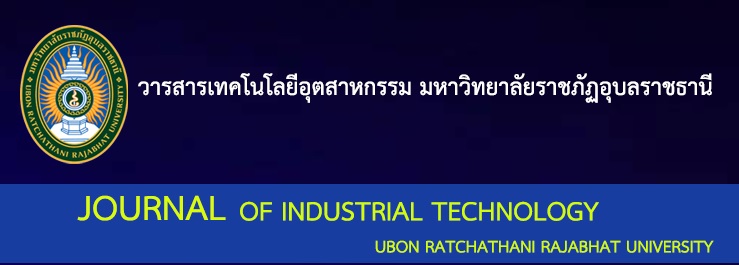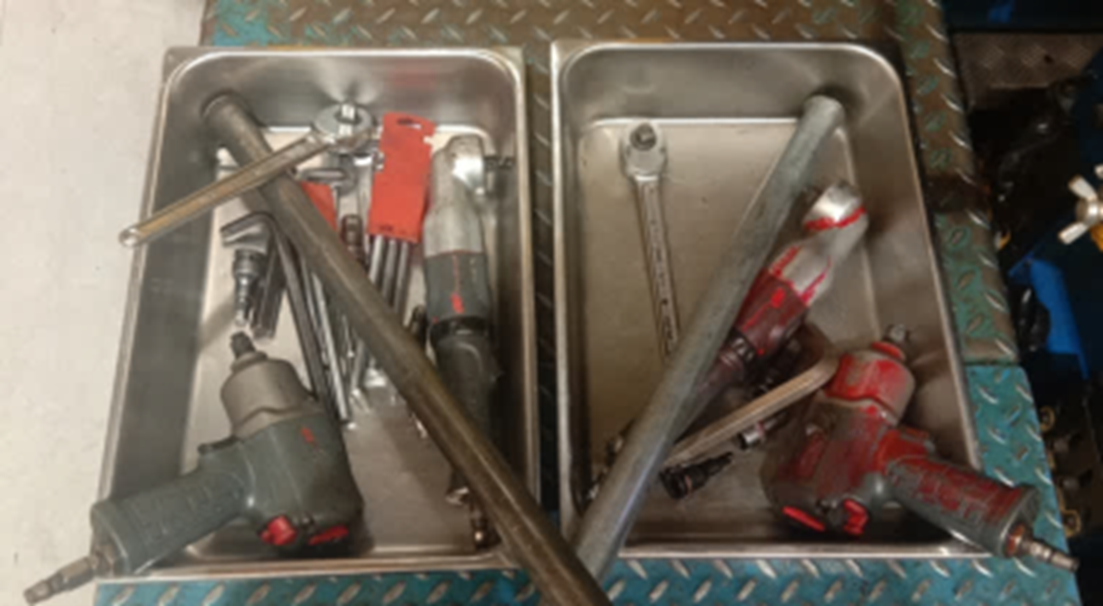Reducing Time and Increasing Efficiency of Machine Set-up Case Study of Plastic Sheeting for Battery Barriers Company
Main Article Content
Abstract
This research aims to study the calendar roll setup process, reduce set-up time, and increase worker efficiency. The initial study involves understanding how the calendar roll powered by disc coupling is setup to produce plastic sheeting for battery barriers so that the internal and external work are separated. Each worker's data is collected using the gang process chart. According to the study, there are 6 workers in this process, and the average efficiency of the workers is 26 percent. The total set-up time is 52.52 minutes. Single Minute Exchange of Die (SMED) techniques are applied to improve work activities by separating the internal and external settings. The equipment is prepared, and the calendar rolls are checked prior to the setup process. Certain tasks can be modified to be performed after the completion machine setup. Moreover, unnecessary motions are found. Therefore, the ECRS principle stands for eliminate, combine, rearrange, and simplify which is applied. The results indicate the number of workers can be reduced to four. The average efficiency of the workers increased to 64 percent. The total set-up time is reduced to 35.25 minutes or 33 percent.
Article Details

This work is licensed under a Creative Commons Attribution-NonCommercial-NoDerivatives 4.0 International License.
Articles published in Journal of Industrial Technology Ubon Ratchathani Rajabhat University both hard copy and electronically are belonged to the Journal.
References
S. Sukphisarn. “Automotive parts industry group moves in 4 major directions to push Thailand towards the emergence of modern automobiles.” Thansettakij. Accessed: Sep. 10, 2022. [Online.] Available: https://www.thansettakij.com/columnist/516213 (in Thai)
M. Kittiyankajon, M. Wongharjuk and M. Susomboon, “Application of single minute exchange of die and ECRS techniques to reduce machine set up time: a case study of powdered drink mix process,” Engineering Journal Chiang Mai University, vol. 27, no. 1, pp. 1–11, Apr. 2020. (in Thai)
W. Keawsuwan and W. Rattanawong, “The study reduce wasting time and increase efficiency in the production process by study cases were drawn from the canned beverage manufacturing factory,” in The 15th RSU National Graduate Research Conference., Aug. 2020, pp. 1331-1342. (in Thai)
P. Lerdsakwanich and M. Susomboon, “Setup time reduction for hot pressing mold changeover,” Journal of Engineering, Rajamangala University of Technology Thanyaburi, vol. 18, no. 2, pp. 47–58, Dec. 2020. (in Thai)
S. Charoenprasit and S. Ketpum, “Productivity improvement of automotive refrigerant pipe production line case study: pipe no. CNN1170-004000,” Journal of Industrial Technology Ubon Ratchathani Rajabhat University, vol. 10, no. 2, pp. 61–74, Dec. 2020. (in Thai)
J. Kanlayapo, and J. Ngaoprasertwong, “Waste reduction in tire flap manufacturing process,” Engineering Journal Chiang Mai University, vol. 28, no. 1, pp. 78–92, Apr. 2021. (in Thai)
K. Khunprom, K. Puasakul, S. Swangnop and A. Vilasdaechanont, “Process improvement in wooden pallet factory,” Thai Industrial Engineering Network Journal, vol. 7, no. 2, pp. 90–99, Dec. 2021. (in Thai)

